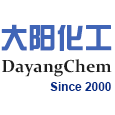Products Categories
| CAS No.: | 1291-32-3 |
|---|---|
| Name: | Bis(cyclopentadienyl)zirconium dichloride |
| Article Data: | 152 |
| Molecular Structure: | |
|
|
|
| Formula: | C10H10Cl2Zr |
| Molecular Weight: | 292.319 |
| Synonyms: | Zirconium,dichlorodi-p-cyclopentadienyl- (8CI);Zirconium, dichlorodicyclopentadienyl- (7CI);Bis(cyclopentadienyl)dichlorozirconium;Bis(cyclopentadienyl)zirconium dichloride;Bis(cyclopentadienyl)zirconium(IV)dichloride;Bis(h5-cyclopentadienyl)dichlorozirconium;Dichlorobis(h5-cyclopentadienyl)zirconium;Dichlorobis(p-cyclopentadienyl)zirconium;Dichlorodi-p-cyclopentadienylzirconium;Dichlorodicyclopentadienylzirconium;Dichlorozirconocene;Dicyclopentadienyldichlorozirconium;Dicyclopentadienylzirconium dichloride;Eurecen 5034;NSC 93930;Zirconium dicyclopentadiene dichloride;Zirconocene,dichloride; |
| EINECS: | 215-066-8 |
| Density: | 6.73g/cm3 |
| Melting Point: | 242-245 ºC(lit.) |
| Boiling Point: | 41.5 ºC at 760 mmHg |
| Flash Point: | 124-125 ºC/15mm |
| Solubility: | hydrolysis |
| Appearance: | white to light beige crystals or powder |
| Hazard Symbols: |
 Xi Xi
|
| Risk Codes: | 36/37/38 |
| Safety: | 26-36 |
| Transport Information: | UN 3261 |
| PSA: | 0.00000 |
| LogP: | 3.29540 |
- 144851-82-1METHYL2-AMINO-3-FLUOROBENZOATE
- 483366-12-7(2S,4R)-1-Boc-2-cyano-4-hydroxypyrrolidine
- 173606-50-3BOC-10-AMINODECANOIC ACID
- 361456-36-2METHYL (R)-(+)-ISOCYANATO-3-PHENYLPROPI&
- 5156-58-1N-(1-Benzyl-4-pipperidinyl)-N-phenylpropanamide HCl
- 81281-59-67-Benzylideneaminotheophylline
- 50288-62-5threo-Phenyl-2-piperidyl acetamide
- 82993-81-5D-threo-Ritalinic acid hydrochloride
- 47087-37-6Z-D-Glu-OMe
- 73441-42-6METHYL-5-CHLORO-2,2-DIMETHYLVALERATE

What can I do for you?
Get Best Price
Consensus Reports
Standards and Recommendations
ACGIH TLV: TWA 5 mg(Zr)/m3; STEL 10 mg(Zr)/m3; Not Classifiable as a Human Carcinogen
Specification
The Zirconocene dichloride, with the CAS registry number 1291-32-3, is also known as Bis(cyclopentadienyl)zirconium dichloride. It belongs to the product categories of Classes of Metal Compounds; Metallocenes; Titanocene, etc.; Transition Metal Compounds; Zr (Zirconium) Compounds; Catalyst; Metallocene. Its EINECS registry number is 215-066-8. This chemical's molecular formula is C10H10Cl2Zr and molecular weight is 292.32. What's more, its systematic name is called Dichloro(cyclopenta-1,3-dien-1-yl)cyclopenta-2,4-dien-1-ylzirconium. It is a colourless diamagnetic solid that is somewhat stable in air.
Physical properties about Zirconocene dichloride are: (1)#H bond acceptors: 0; (2)#H bond donors: 0; (3)#Freely Rotating Bonds: 2.
Preparation of Zirconocene dichloride: this chemical can be prepared from zirconium(IV) chloride-THF complex and sodium cyclopentadienide.
ZrCl4(THF)2 + 2 NaCp → Cp2ZrCl2 + 2 NaCl + 2 THF
Uses of Zirconocene dichloride: (1) it is used as rubber accelerator; (2) it is used to produce other chemicals. For example, it can react with lithium aluminium hydride to give Cp2ZrHCl Schwartz's reagent. Since lithium aluminium hydride is a strong reductant, some over-reduction occurs to give the dihydrido complex, Cp2ZrH2; treatment of the product mixture converts it to Schwartz's reagent.
(C5H5)2ZrCl2 + 1/4 LiAlH4 → (C5H5)2ZrHCl + 1/4 "LiAlCl4"
When you are dealing with this chemical, you should be very careful. This chemical is inflammation to the skin, eyes and respiratory system or other mucous membranes. Therefore, you should wear suitable protective clothing. And in case of contacting with eyes, you should rinse immediately with plenty of water and seek medical advice.
You can still convert the following datas into molecular structure:
(1) SMILES: Cl[Zr](Cl)(C/1/C=C\C=C\1)C=2C\C=C/C=2
(2) InChI: InChI=1S/2C5H5.2ClH.Zr/c2*1-2-4-5-3-1;;;/h1-3H,4H2;1-5H;2*1H;/q;;;;+2/p-2
(3) InChIKey: LMKLOQOWEOYSSR-UHFFFAOYSA-L
The toxicity data is as follows:
| Organism | Test Type | Route | Reported Dose (Normalized Dose) | Effect | Source |
|---|---|---|---|---|---|
| rat | LD50 | intraperitoneal | 30mg/kg (30mg/kg) | Progress Report for Contract No. PH-43-64-886, Submitted to the National Cancer Institute by The Institute of Chemical Biology, University of San Francisco. Vol. PH43-64-886, |
-
Premium Related Products

